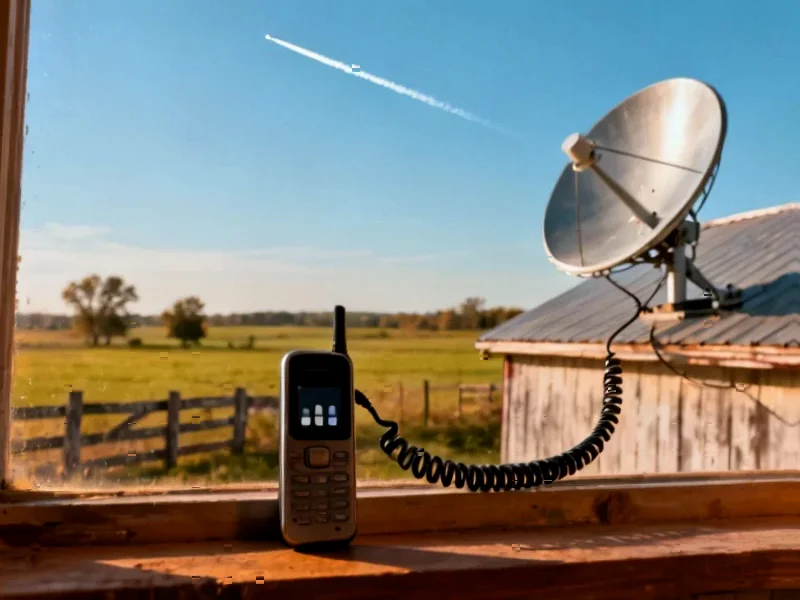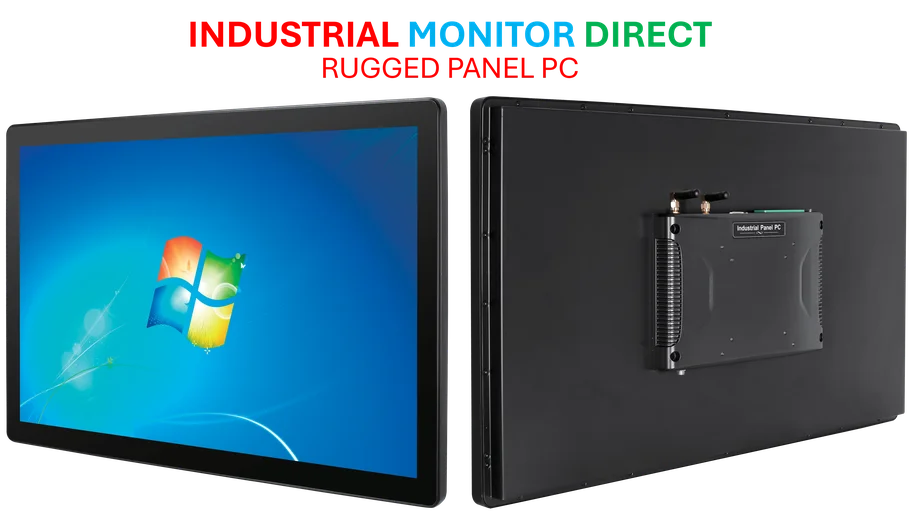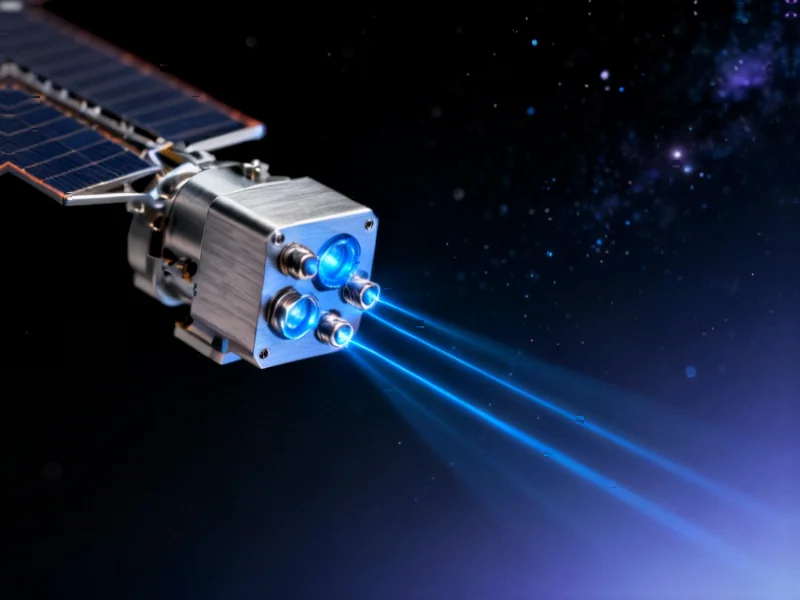According to New Scientist, University of California, Irvine researchers analyzed satellite tracking data during a May 2024 solar storm and found Starlink satellites experienced altitude drops up to half a kilometer, with satellites on the sun-facing side and near Earth’s poles most affected. The study revealed these disruptions created “wave-like” effects throughout the constellation as satellites automatically adjusted positions using ion thrusters, potentially increasing collision risks with other spacecraft. During the same storm, network monitoring data showed immediate spikes in packet loss for Starlink customers, indicating service disruptions. The research comes after a February 2022 solar storm destroyed approximately 40 newly launched Starlink satellites, highlighting growing vulnerability as satellite numbers increase dramatically. These findings raise critical questions about space infrastructure resilience.
The Domino Effect in Orbit
The interconnected nature of satellite constellations creates systemic vulnerabilities that traditional single-satellite missions never faced. When one satellite in a mesh network experiences atmospheric drag from solar activity, its neighbors must compensate to maintain network integrity. This creates a cascade effect where localized disturbances propagate throughout the entire system. The research by Sangeetha Abdu Jyothi’s team essentially reveals that we’ve created digital ecosystems in space that behave like biological systems – where stress in one area creates ripple effects across the network. This interdependence means that space weather events no longer just threaten individual satellites but can destabilize entire orbital infrastructures.
The Unpredictability Problem
For space traffic management systems, predictability is everything. The slight but unpredictable altitude changes documented in the research create navigation nightmares for all spacecraft sharing orbital space. Current collision avoidance systems rely on precise trajectory predictions, but solar storms introduce chaos into these calculations. The problem compounds as more constellations launch – Amazon’s Project Kuiper plans over 3,000 satellites, while China has multiple constellation projects in development. Each additional satellite increases the probability of unexpected encounters during space weather events. We’re essentially building an increasingly complex orbital highway system without fully understanding how solar storms will affect traffic patterns.
Critical Infrastructure at Risk
The implications extend far beyond internet service disruptions. Satellite constellations now form the backbone of global communications, navigation, and Earth observation systems. Banking transactions, emergency services, shipping logistics, and military operations all depend on reliable satellite connectivity. The packet loss spikes observed during the May 2024 storm suggest that solar activity could periodically degrade these critical services. As the research paper indicates, we’re only beginning to understand how local atmospheric variations affect satellite networks. This knowledge gap represents a significant vulnerability in our increasingly space-dependent civilization.
The Coming Solar Maximum Crisis
The timing couldn’t be more concerning. We’re approaching the peak of Solar Cycle 25, with maximum activity expected through 2025. While the research suggests we might have until the 2040s for the next major peak, solar storms can strike at any time – as evidenced by the Carrington-level near-miss in 2012 that would have caused trillions in damage had it hit Earth. By the next major solar maximum, we could have hundreds of thousands of satellites in orbit compared to today’s approximately 13,000. The scaling problem is exponential – more satellites mean more potential collision scenarios during space weather events. As Mathew Owens’ research on substorms suggests, we still lack predictive models for how these smaller-scale variations will affect different orbital regimes.
The Insurance and Liability Nightmare
The financial implications of space weather damage are staggering. Satellite operators face potential losses from both destroyed assets and service interruption liabilities. Insurance premiums for satellite launches during active solar periods will likely increase significantly. More concerning is the liability question – if a solar storm causes satellite collisions that generate debris, who bears responsibility? The current regulatory framework doesn’t adequately address space weather-induced accidents. As constellations grow, a single major solar event could trigger cascading collisions creating debris fields that render entire orbital regions unusable for decades – the dreaded Kessler Syndrome scenario.
The Urgent Need for Space Weather Forecasting
What’s needed is a paradigm shift in how we approach space infrastructure. We must develop real-time space weather monitoring and prediction systems specifically designed for satellite constellation operators. The research shows that Starlink satellites essentially function as atmospheric probes, providing unprecedented data about space weather effects. This data should be leveraged to create machine learning models that can predict drag variations during solar events. Satellite operators need to implement more robust station-keeping strategies and develop contingency plans for network-wide disruptions. The alternative is learning through catastrophic failure – an unacceptable risk given our growing dependence on orbital infrastructure.


